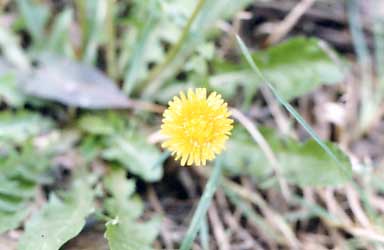Learn to
identify more than 100 weeds,
to design management strategies and
apply weed control techniques and programs in a safe and efficient way.

COURSE STRUCTURE
The course is divided into 8 lessons as follows:
1. Weed Identification: review of the system of plant identification, general characteristics of the weeds, further information, contacts, etc.
2. Weed Control Methods: practical research on management of weeds, understanding terminology and the use of mulches
3. Chemical Weed Control: review of commercial and domestic herbicides, determining what differentiates them, their availability and use.
4. Weed Control In Specific Situations: understanding weed control strategies for particular situations, accessing first hand information about weed control from industry leaders and determining a weed control program for five different sites.
5. Safe Chemical Application: reviewing what types of chemicals and application methods are used in the industry and the required safety procedures for the handling and administrating chemical herbicides.
6. Non-Chemical Weed Control: determining any detrimental effects chemical herbicides have on the environment, reviewing non-chemical applications and their effectiveness.
7. Dealing With Specific Weed Control Problems: looking at current industry practices for weed control and the effects on the environment, in relation to specific weed control problems.
8. Developing A Major Weed Control Program: a practical lesson where the student can fully demonstrate their understanding of weed control by devising a weed management plan for a designated area.
COURSE AIMS
- To distinguish between different types of weeds, and identify common weed species, growing in your locality.
- To understand the characteristics of different weed control methods.
- To be able to explain the use of chemical herbicides to control weeds.
- To be able to specify appropriate weed control methods, for different types of situations.
- To determine appropriate techniques for the safe application of chemical herbicide in a specific situation.
- To be able to explain different non-chemical weed control methods.
- To be able to devise appropriate methods for control of weeds, for specific problems, in both the horticultural and agricultural industries
- To be able to determine a detailed weed control program for a significant weed problem.
WHAT YOU WILL DO IN THIS COURSE
- You will look at and consider 104 different varieties of weeds and prepare plant review sheets for 13 different weed plants.
- Make up a list of information resources.
- Plant 5 different varieties of weeds to study.
- Make drawings of young seedlings of at least fifteen different weeds.
- Speak/interview people who have to deal with weed control in their daily life.
- Visit a nursery, garden shop or hardware store that sells herbicides to the public.
- Visit at least one supplier of herbicides for industrial and agricultural use.
- Contact 4 or 5 of the larger chemical companies for leaflets on different herbicides.
- Investigate at least two workplaces where weed control programs are regularly carried out.
- Visit and inspect five different sites where weeds are a problem.
- Photograph different places that have been treated with weedicides.
- Contact your local Department of Agriculture or Lands Department for researching purposes.
- Visit several farmers who raise different types of livestock.
- Develop a 12 month guideline for an integrated weed control program for a particular site
HOW MANY WEEDS DO YOU KNOW?
eg. Do you know the following about Plantain (illustrated below)

FAMILY: Plataginaceae
GENUS: Plantago
SPECIES: lanceolata
COMMON NAMES: narrow leafed plantain, English plantain
HEIGHT AND HABIT: this annual plant forms a rosette of lance-shaped, parallel ribbed leaves. The leaves often appear shiny or silky. The rosette can reach 10-25cm across depending on the rainfall and growing conditions. The flower stalks arising from the basal crown can also vary according to the location from 10cm to almost 35cms tall. The oblong pointed, brownish green flower head has a distinctive ring of lemon coloured stamens when the plant is in full flower. The plant usually has a strong, deep tap root.
GROWING CONDITIONS: grows in neutral to alkaline soils in sands or clay loams, in dry positions in full sun. Usually found on roadsides and waste places. Prefers moist fertile soils.
METHOD OF SPREAD: seeds
PROPERTIES AND FEATURES: does not like to grow in highly acid soils it has a wide range of herbal therapeutic properties. (Consult reputable herbals for details).
METHOD OF CONTROL: generally easy to remove with a special flat weed cultivator/ lifter. Broad leaf weedicides are also available.